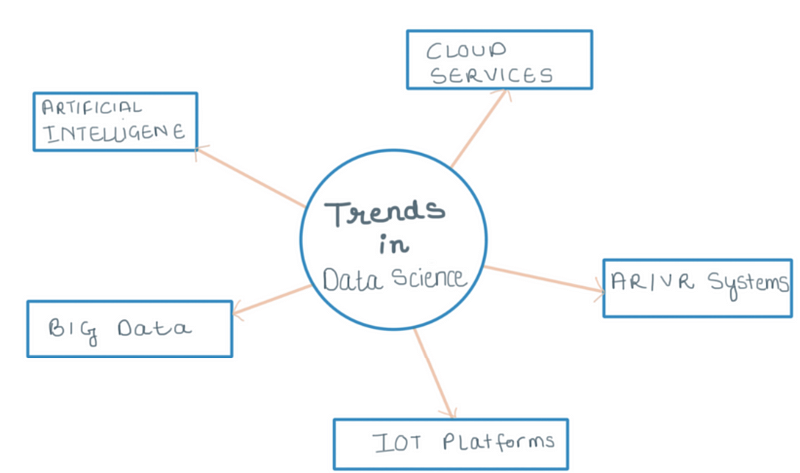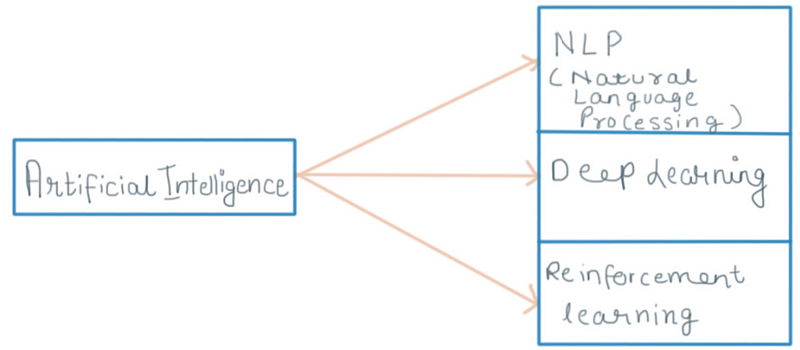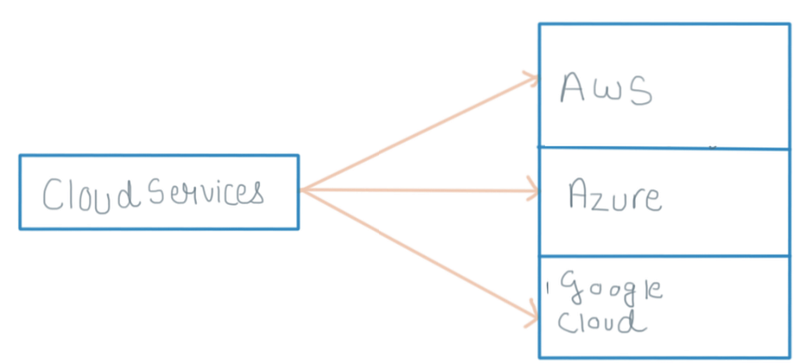Top 5 trends in Data Science
Introduction
Data Science is a study which deals with the identification, representation, and extraction of meaningful information from data. It can be collected from different sources to be used for business purposes.
With an enormous amount of facts generating each minute, the requirement to extract the useful insights is a must for the businesses. It helps them stand out from the crowd. Data engineers set up the data storage in order to facilitate the process of data mining, data munging activities. Every other organization is running behind profits. But the companies that formulate effective strategies based on insights always win the game in the long-run.
In this blog, we will be discussing new advancements or trends in the data science industry. Consecutively, these advancements are enabling it to tackle some of the trickiest problems across various businesses.
Top 5 Trends
Analytics and associated data technologies have emerged as core business disruptors in the digital age. As companies began the shift from being data-generating to data-powered organizations in 2017, data and analytics became the centre of gravity for many enterprises. In 2018, these technologies need to start delivering value. Here are the approaches, roles, and concerns that will drive data analytics strategies in the year ahead.
The Data Science Trends for 2018 are largely a continuation of some of the biggest trends of 2017 including Big Data, Artificial Intelligence (AI), Machine Learning (ML), along with some newer technologies like Blockchain, Serverless Computing, Augment Reality, and others that employ various practices and techniques within the Data Science industry.

If I am to pick top 5 data science trends right now (which can be very subjective but I will try it to justify the most), I will list them as
- Artificial Intelligence
- Cloud Services
- AR/VR Systems
- IoT Platforms
- Big Data
Let us understand each of them in bit more detail!
Artificial Intelligence
Artificial intelligence (AI) is not new. It has been around for decades. However, due to greater processing speeds and access to vast amounts of rich data, AI is beginning to take root in our everyday lives.
From natural language generation and voice or image recognition to predictive analytics, machine learning, and driverless cars, AI systems have applications in many areas. These technologies are critical to bringing about innovation, providing new business opportunities and reshaping the way companies operate.

Artificial Intelligence is itself a very broad area to explore and study. But there are some components within artificial intelligence which are making quite a buzz around with their applications across business lines. Let us have a look at them one by one.
-
Natural language Processing
With advances in computational power and the integration of artificial intelligence, the natural language processing domain has evolved into a whirlwind of innovation. In fact, experts expect the NLP market to swell to an impressive $22.3 billion by 2025. One of the many applications of NLP in business is chatbots. Chatbots demonstrate utility in the customer service realm. These automated helpers can take care of simple frequently asked questions and other lookup tasks. This leaves customer service agents free to devote time to troubleshooting bigger matters that personalize and enhance the customer experience. Chatbots can save valuable time and energy for all members of the value stream. Chatbot technology is poised for considerable growth as speech and language processing tools become more robust by expanding beyond rules-based engines to include neural conversational models.
-
Deep Learning
You might think that Deep Learning sounds a lot like Artificial Intelligence, and that’s true to a point. Artificial Intelligence is a machine developed with the capability for intelligent thinking. Deep Learning, on the other hand, is an approach to Machine Learning which involves Artificial Neural Networks to work with the data. Today, there are more Deep Learning business applications than ever. In different cases, it can be the core offering of the product, such as self-driving cars. Over the past few years. It is found powering some of the world’s most powerful tech today: everything from entertainment media to self-driving cars. Some of the applications of deep learning in business include recommender systems, self-driving cars, image detection, and object classification.
-
Reinforcement Learning
The reinforcement learning model prophesies interaction between two elements — Environment and the learning agent. The learning agent leverages two mechanisms namely exploration and exploitation. When the learning agent acts on trial and error, it is termed as exploration, and when it acts based on the knowledge gained from the environment, it is referred to as exploitation. The environment rewards the agent for corrective actions, which is the reinforcement signal. Leveraging the rewards obtained, the agent improves its environment knowledge to select the next action. Now, artificial agents are being created to perform the tasks as a human. These agents have made their presence felt in businesses, and the use of agents driven by reinforcement learning is cut across industries. Some of the practical applications of reinforcement learning include robots driven in the factory, space management in warehouses, dynamic pricing agents, and driving financial investment decisions.
Cloud Services
The complexity in data science is increasing by the day. This complexity is driven by fundamental factors like increased data generation, low-cost storage, and cheap computational power. So, in summary, we are generating far more data, we can store it at a low cost and can run computations and simulations on this data at a low cost!
To tackle the increasing complexities in data science here is why we need cloud services
- Need to run scalable data science
- Cost
- The larger ecosystem for machine learning system deployments
- Use for building quick prototypes

In the field of cloud services, we have 3 major players in this field leading the pack. AWS(Amazon), Azure(Microsoft), GCP(Google).
Augmented Reality/Virtual Reality Systems
The Immersive Experience related to augmented reality (AR) and virtual reality (VR) is already changing the world around us. The human-machine interaction will improve as research breakthroughs in AR and VR come about. It is a claim made in a Gartner report, Augmented Analytics is the future of Data and Analytics, published in July 2017. Augmented analytics automates data insights through machine learning and natural language processing, enabling analysts to find patterns and prepare smart data that can be easily shared and operationalized. Accessible augmented analytics produces citizen data scientists and make an organization more agile.
IoT Platforms
Internet of things refers to a network of objects, each of which has a unique IP address & can connect to the internet. These objects can be people, animal and day to day devices like your refrigerator and your coffee machine. These objects can connect to the internet (and to each other) and communicate with each other through this net, in ways which have not been thought before. The data from current IoT pilot rollouts (sensors, smart meters, etc) will be used to make smart decisions using predictive analytics. E.g., forecast electricity usage from each smart meter to better plan distribution; forecast power output of each wind turbine in a wind farm; predictive maintenance of machines, etc.
The power of Big Data
Big data is a term to refer to data sets that are too large or complex for traditional data-processing application software to adequately deal with.

It was a significant trend in data science in 2017 but lately, there have been some advancements in Big data lately which has made it a trend in 2018 too. Let us have a look at some of them
-
Block Chain
Data science is a central part of virtually everything — from business administration to running local and national governments. At its core, the subject aims at harvesting and managing data so organizations can run smoothly. For some time now, data scientists have been unable to share, secure and authenticate data integrity. Thanks to bitcoin being overly hyped, the blockchain, the technology that underpins it, got the attentive eyes of data specialists. Blockchain Improves data integrity, provides easy and trusted means of data sharing capabilities, enable real-time analysis and data traceability. With robust security and transparent record keeping, blockchain is set to help data scientists achieve many milestones that were previously considered impossible. Although the decentralized digital ledgers are still a novice technology, the preliminary results from companies experimenting on them, like IBM and Walmart, prove that they work.
-
Handling Datastreams
Stream Processing is a Big data technology. It enables users to query continuous data stream and detect conditions fast within a small time period from the time of receiving the data. The detection time period may vary from few milliseconds to minutes. For example, with stream processing, you can receive an alert by querying a data streams coming from a temperature sensor and detecting when the temperature has reached the freezing point. Streaming data possesses immense capabilities which makes it a running trend in Big data till date.
-
Apache Spark
Apache Spark is a fast, in-memory data processing engine with elegant and expressive development APIs to allow data workers to efficiently execute streaming, machine learning or SQL workloads that require fast iterative access to datasets. With Spark running on Apache Hadoop YARN, developers everywhere can now create applications to exploit Spark’s power, derive insights, and enrich their data science workloads within a single, shared dataset in Hadoop. With apache releasing new features time by time to its spark library (Spark streaming, GraphX etc), it has been able to maintain its hold as a trend in Big Data till data
Conclusion
This is only the beginning, as data science continues to serve as the catalyst in the changes you are going to experience in business and technology. It is now up to you on how to efficiently adapt to these changes and help your own business flourish.
Stay tuned for more blogs!

